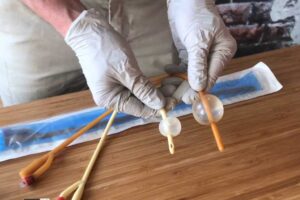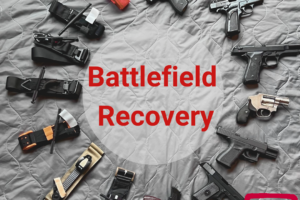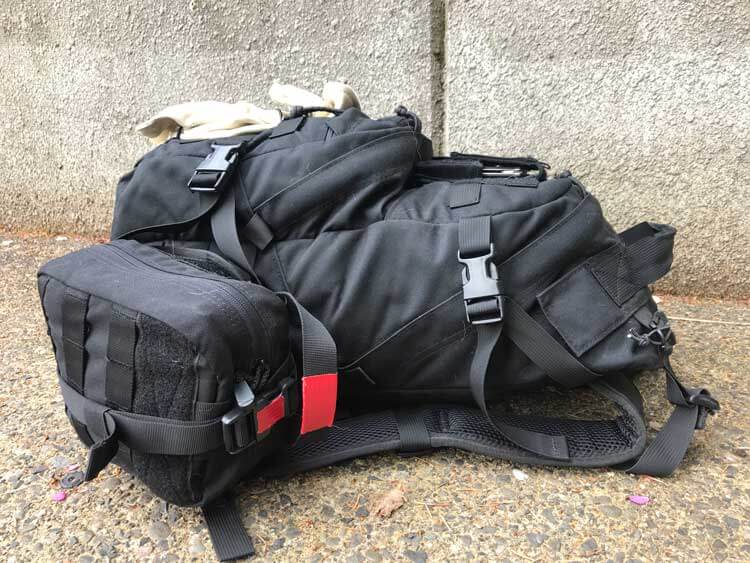
Red X Marks the Spot: Mark your medical gear to help rescuers find it
- Posted by Mike Shertz MD/18D
- Categories Equipment
🕖 Reading Time, 3 minutes
[vc_row][vc_column][vc_column_text]
If you are carrying medical gear on your person, its location needs to be clearly marked so rescuers can find it in an emergency.
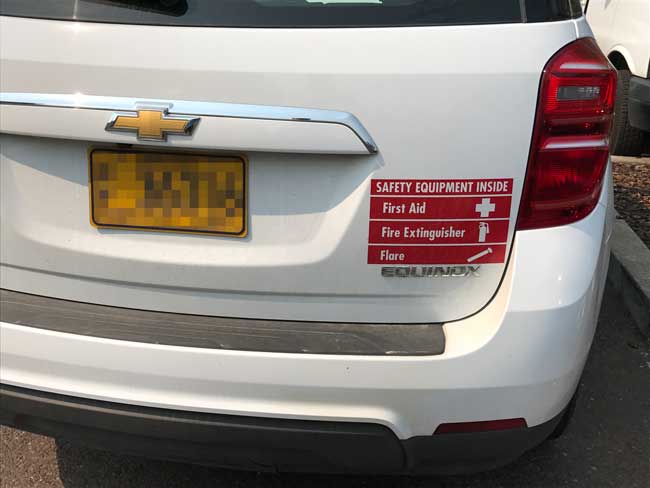
Just as emergency exits are marked with colored signs to make them easier to spot, so too must your emergency medical equipment be marked. Without specific markings, no one will identify your medical pouch or bag from any other Molle, mag pouches, or other gear.
We recommend red duct tape or similar red markings be used on all medial gear. Imagine approaching a casualty in full gear and having no idea if they are carrying medical equipment or where to find it on them. However, if in your initial evaluation you see red duct tape on the pull handle of a pouch, the odds are pretty good that pouch is an IFAK or contains some medical equipment.
Rarely are a few inches of red marking going to be a tactical liability, even in wooded environments. Red just isn’t that visible from a distance or in low light. That is why red fire trucks get in substantially more accidents than lime green fire trucks. The reason is speculated to be the eye’s ability to see yellow greens better under low light conditions.
If you want a first responder to find it, mark it in red.
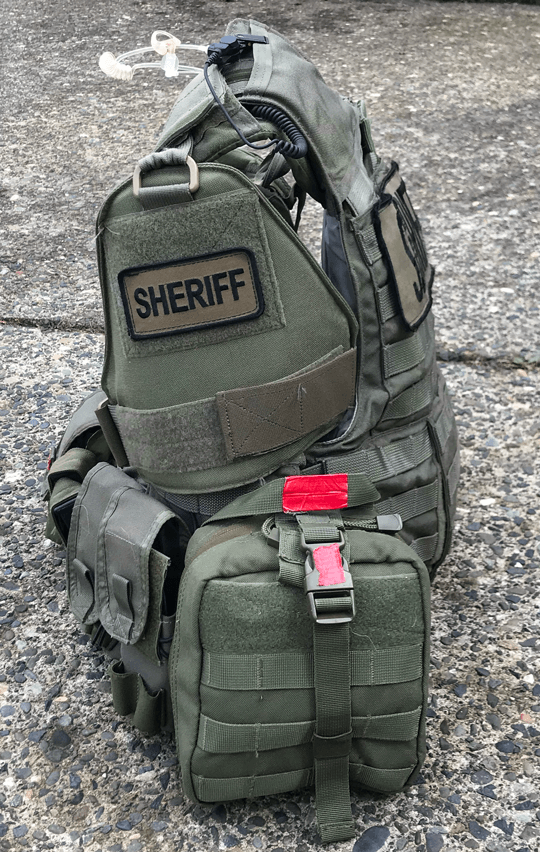
When I occasionally interact with medical students at my hospital, I like to ask them why your blood is red. They then attempt to impress me with details of hemoglobin and oxygen bindings, light wavelengths, etc. I stop them to say, “Your blood is red to get your attention when it is leaking out of your body.”
We recently trained a bomb disposal unit and learned the intricacies of getting the bomb suit off of an operator in case of injury. Similarly, all those tricky zippers and pull tabs should be marked with red-550 cord or similar. If you want a first responder to find it, mark it in red.
You may not be conscious immediately after you are injured. Be your own force multiple for good. Help yourself get rescued and treated. Mark your gear in red for the ease of your rescuers and your own survival.
Your blood is red to get your attention when it is leaking out of your body
[/vc_column_text][vc_row_inner][vc_column_inner width=”1/3″][vc_single_image image=”9184″ img_size=”medium”][/vc_column_inner][vc_column_inner width=”1/3″][vc_single_image image=”9178″ img_size=”medium”][/vc_column_inner][vc_column_inner width=”1/3″][vc_single_image image=”9177″ img_size=”medium”][/vc_column_inner][/vc_row_inner][/vc_column][/vc_row]
Dr. Mike Shertz is the Owner and Lead Instructor at Crisis Medicine. Dr. Shertz spent over 30 years gaining the experience and insight to create and provide his comprehensive, science-informed, training to better prepare everyday citizens, law enforcement, EMS, and the military to manage casualties and wounded in high-risk environments. Using a combination of current and historical events, Dr. Shertz’s lectures include relevant, illustrative photos, as well as hands-on demonstrations to demystify the how, why, when to use each emergency medical procedure you need to become a Force Multiplier for Good.


